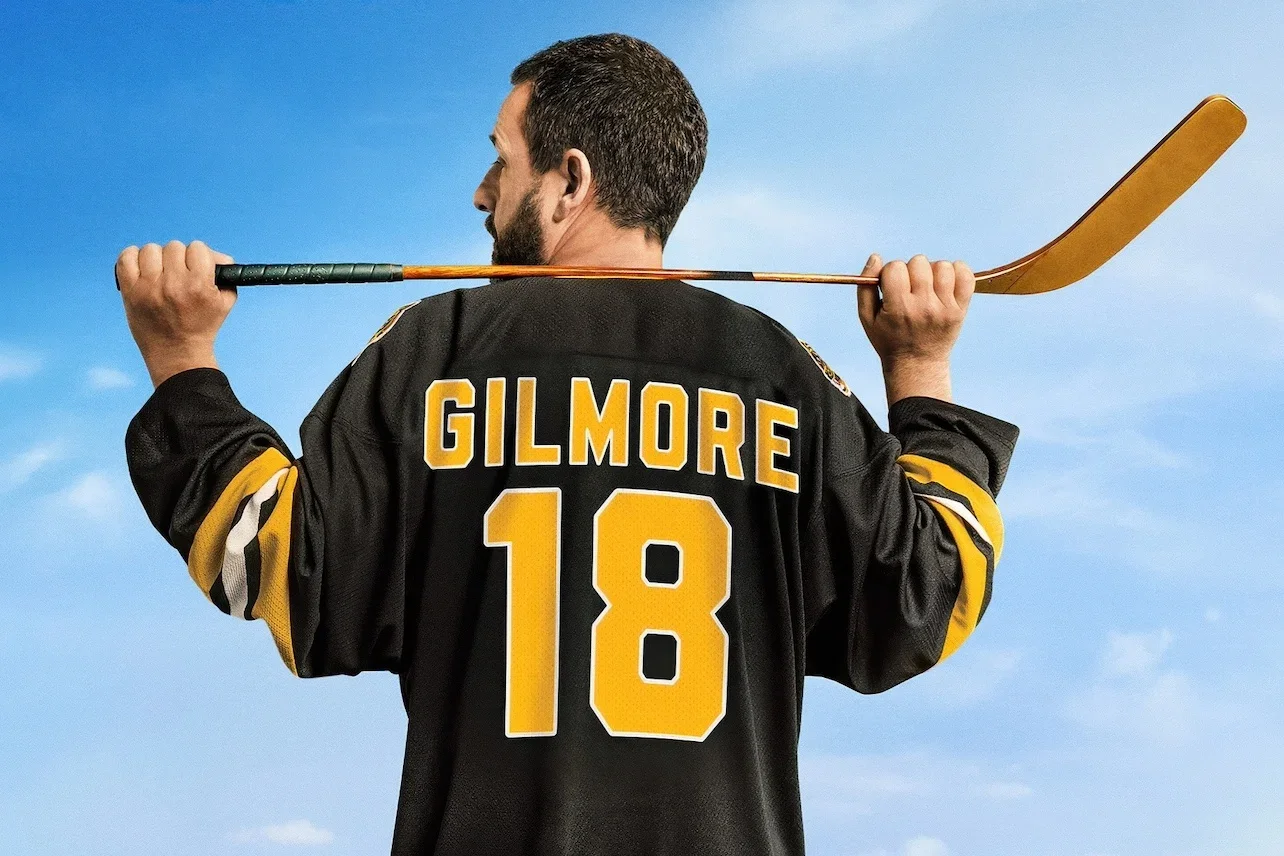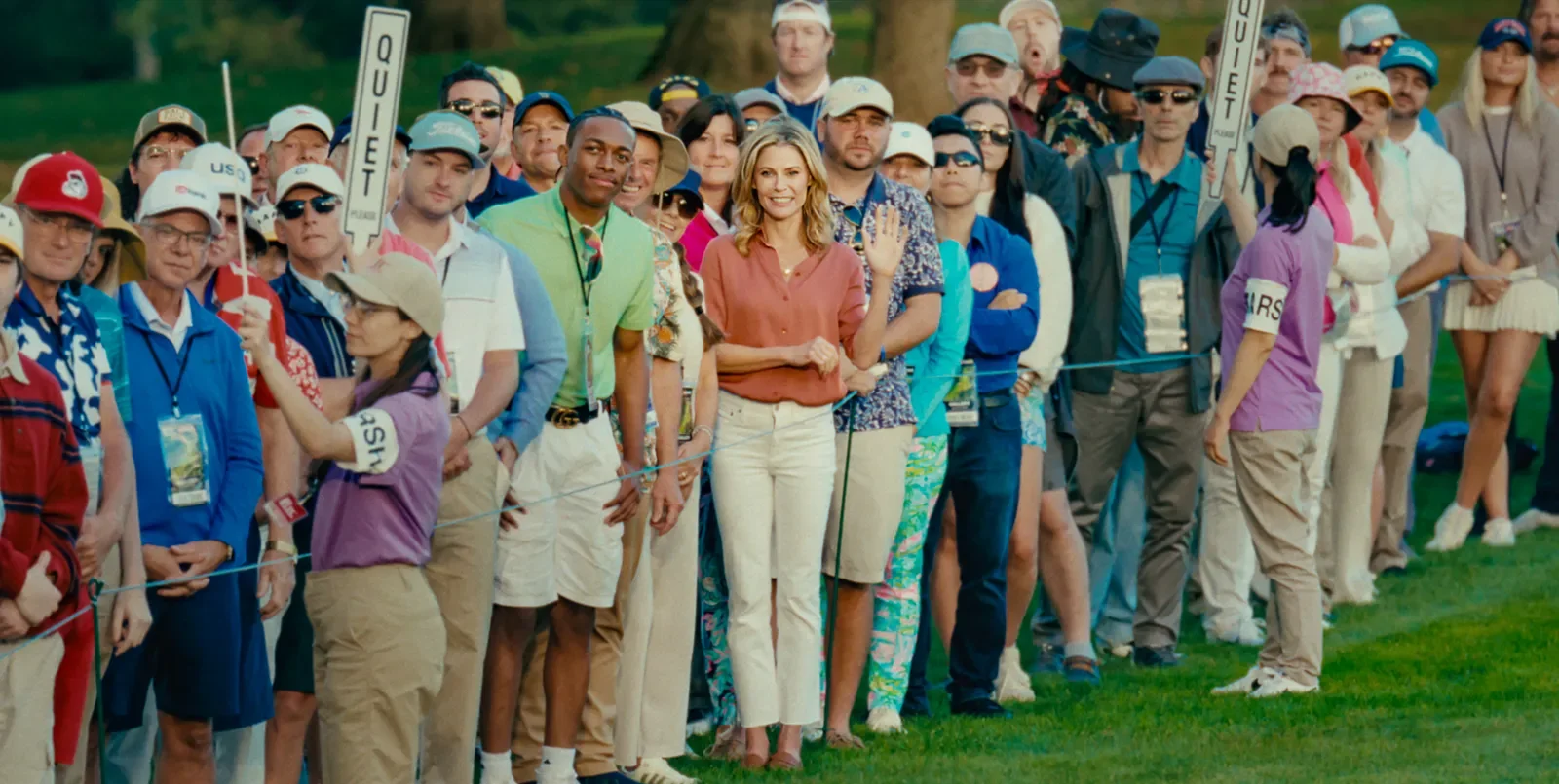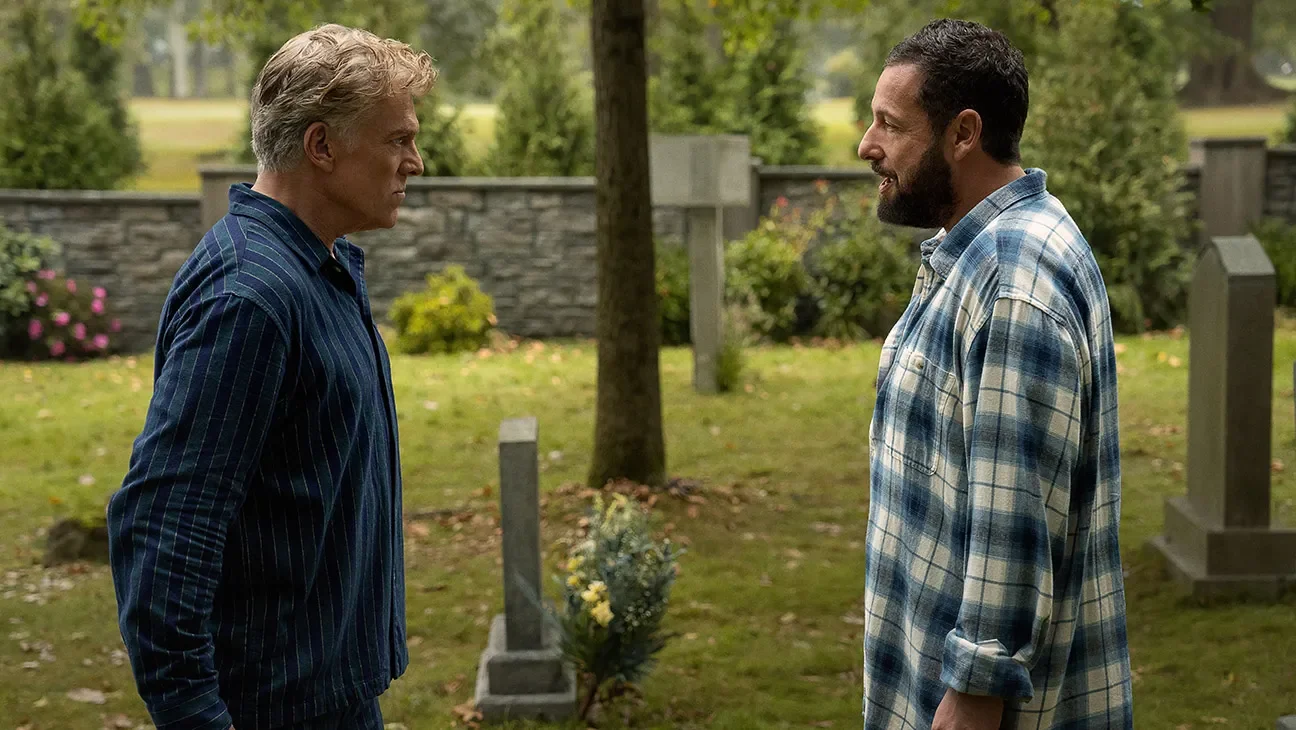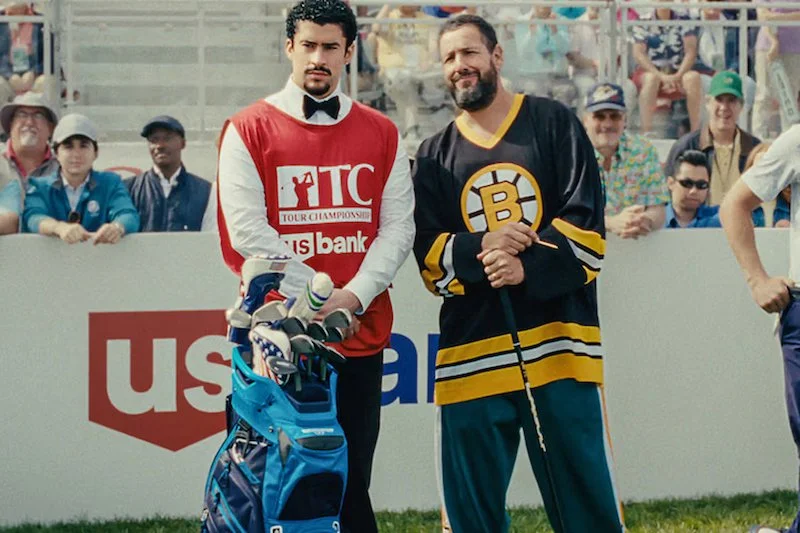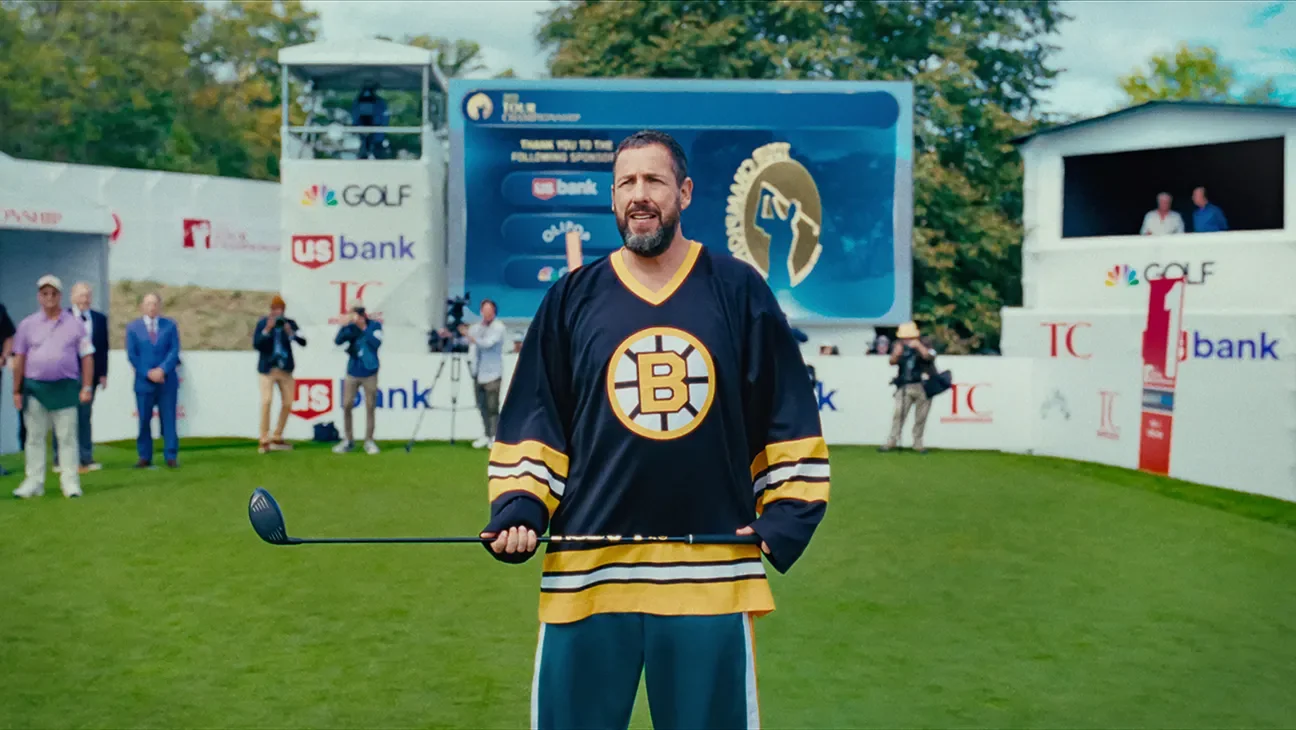‘Happy Gilmore 2’ Review: Adam Sandler’s Netflix Sequel Is Terrible — and Fans Will Love It
Adam Sandler in 'Happy Gilmore 2.' COURTESY OF NETFLIX
29 years later, Sandler returns to the green in a nostalgia-drenched sequel that doubles down on stupidity, sentimentality, and self-indulgence—and somehow still lands a hole-in-one with fans.
Adam Sandler has built an empire by knowing exactly what his audience wants and giving it to them with little regard for critics. Happy Gilmore 2 is a perfect embodiment of that ethos: loud, lazy, absurd, aggressively stupid, and shamelessly sentimental. But despite its many flaws, it will almost certainly satisfy the very fans who have kept the 1996 original alive through late-night cable reruns and frat-house streaming marathons. As a sequel nearly three decades in the making, it was never trying to win over new audiences. Instead, it aims squarely at the nostalgia receptors of long-time fans, offering a barrage of callbacks, cameos, and inside jokes that hit like errant golf balls to the head.
The film opens with Happy Gilmore (Sandler) in a downward spiral. Once a working-class hero who tamed his temper to become a surprise golf champ, Happy is now a washed-up alcoholic plagued by guilt after a freak accident on the golf course resulted in the death of his beloved wife, Virginia (Julie Bowen, who exits the film early but makes sporadic reappearances as a sarcastic ghost). The tragedy has left Happy estranged from his teenage daughter, Vienna (played by Sandler’s real-life daughter Sunny), and working the night shift at a grocery store.
Julie Bowen in 'Happy Gilmore 2.' COURTESY OF NETFLIX
This grim setup is played mostly for laughs, as the film's tone flips between crass comedy and cartoonish tragedy. We soon learn Vienna needs tuition money for her elite ballet school in Paris, and there's only one thing Happy knows how to do: hit golf balls very, very far. After some nudging from his roommate John Daly (yes, the real golfer, who seems to be living in Happy's garage for no reason other than comic effect), Happy decides to stage a comeback.
But this is not the PGA Tour of the '90s. Enter Maxi Golf, a new, over-the-top golf league that combines the aesthetics of WWE, the absurdity of reality TV, and the biomechanical enhancements of a sci-fi fever dream. Benny Safdie plays the league’s cartoonishly sleazy CEO, whose breath alone becomes a recurring gag. The sport has changed, but Happy hasn't—and therein lies the film's central joke: Sandler's antihero stuck in a future that feels like a parody of his past.
Adam Sandler & Christopher McDonald in 'Happy Gilmore 2.' COURTESY OF NETFLIX
Much of Happy Gilmore 2 is about repetition. Scenes are staged as if the original film never ended, and nearly every character from the first installment makes a cameo, whether in the flesh, via archive footage, or as a literal ghost. Shooter McGavin (Christopher McDonald) returns in glorious fashion, recently released from a psychiatric facility and brought back to help Happy face off against the new generation of golf cyborgs. Their scenes together provide some of the film's only sparks of genuine chemistry. McDonald seems to understand the assignment better than anyone: ham it up, hit your marks, and try to make the audience forget how long it's been.
And while Happy Gilmore 2 tries to update its formula for 2025, it never strays far from the original playbook. Every joke, character arc, and golf ball to the crotch feels lifted directly from the Sandler School of Comedy, complete with fart gags, pratfalls, and random celebrity cameos (including a surprisingly game Bad Bunny, who steals several scenes as Happy's caddie). The jokes rarely land, but the energy is oddly infectious, propelled by the sheer joy Sandler seems to take in reuniting with friends and goofing off in front of the camera.
Adam Sandler & Bad Bunny in 'Happy Gilmore 2.' COURTESY OF NETFLIX
Director Kyle Newacheck, best known for his work on Workaholics, keeps the tone light and the pace brisk. Visually, the film isn’t trying to do anything special—this is still a Happy Madison production, after all—but there are moments when the film embraces its own ludicrousness so fully that it becomes strangely enjoyable. A slow-motion montage of Happy training while using increasingly bizarre objects as liquor containers might be the closest the film comes to clever visual comedy.
POPULAR ON THE CINEMA GROUP
The supporting cast is a mix of familiar faces and inexplicable cameos. Ben Stiller reprises his role as Hal, the sadistic retirement home orderly, now leading an AA group. Geraldine Viswanathan appears briefly as a Maxi Golf analyst who seems to know more about Happy than he does himself. Real-life golf pros pop up in scenes that feel more like ESPN commercials than narrative developments. And yes, Chubbs Peterson is back—sort of. After Carl Weathers’ real-life passing, the film introduces his son Slim Peterson (Lavell Crawford), whose prosthetic hand falls off at the worst possible moments. It’s a crass tribute, but one that fans may embrace with a nostalgic chuckle.
The film's emotional arc, such as it is, revolves around Happy's reconciliation with his daughter. But the father-daughter dynamic feels undercooked, serving more as a vehicle for Sandler to cast his own family than to explore any real themes. Still, there's an earnestness to the film's final act, as Happy rediscovers his passion for golf and learns to channel his rage into love and mentorship. It's sappy, sure, but Sandler has always been able to toggle between juvenile humor and unexpected heart.
Adam Sandler in 'Happy Gilmore 2.' COURTESY OF NETFLIX
That said, the film never justifies its existence beyond the basic desire to cash in on nostalgia. The writing is lazy, the story recycled, and the comedy mostly uninspired. But in a strange way, that's exactly why it works for the fans. It never pretends to be anything other than what it is: a self-referential, low-effort, fan-service extravaganza. For better or worse, Happy Gilmore 2 is content to live in the past—and it turns out, so are its viewers.

